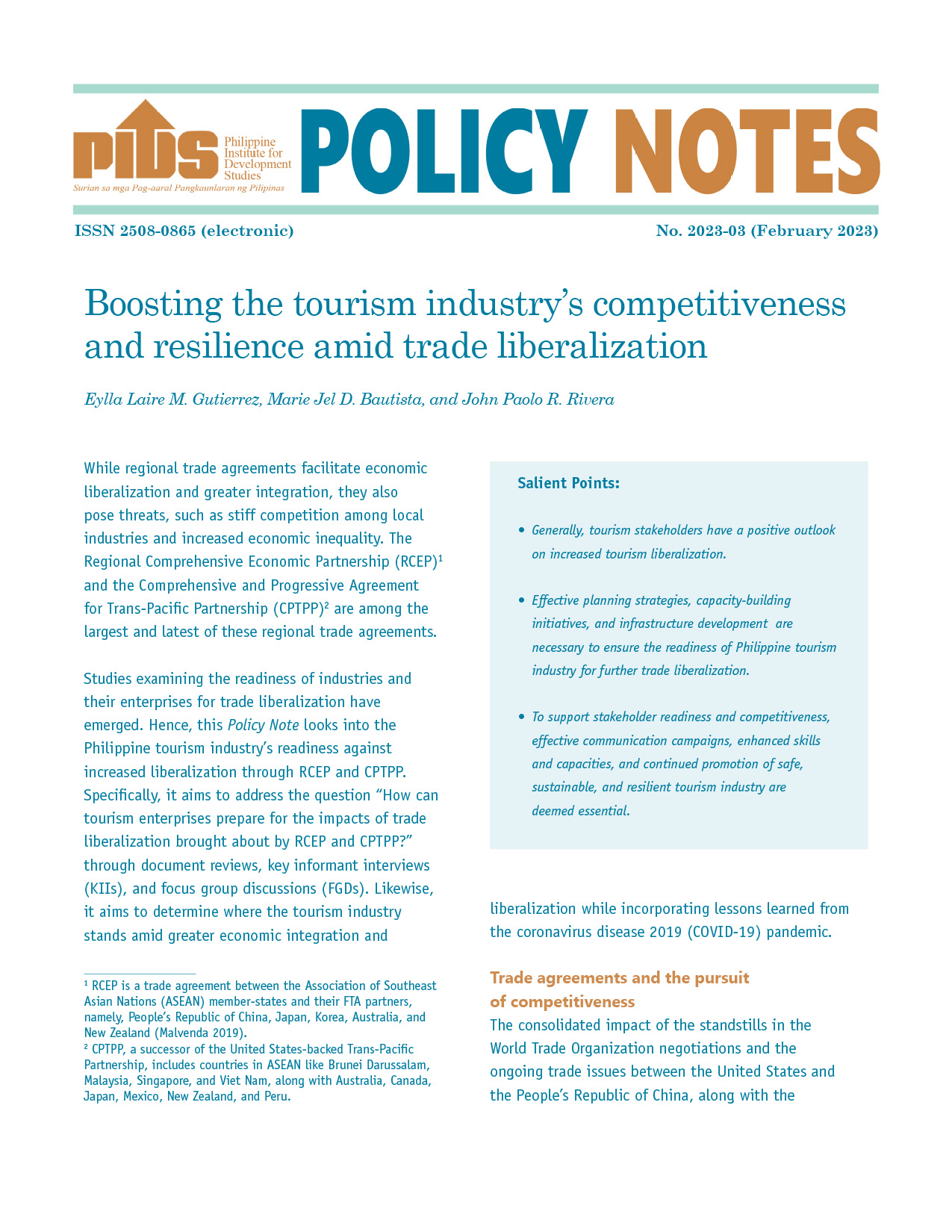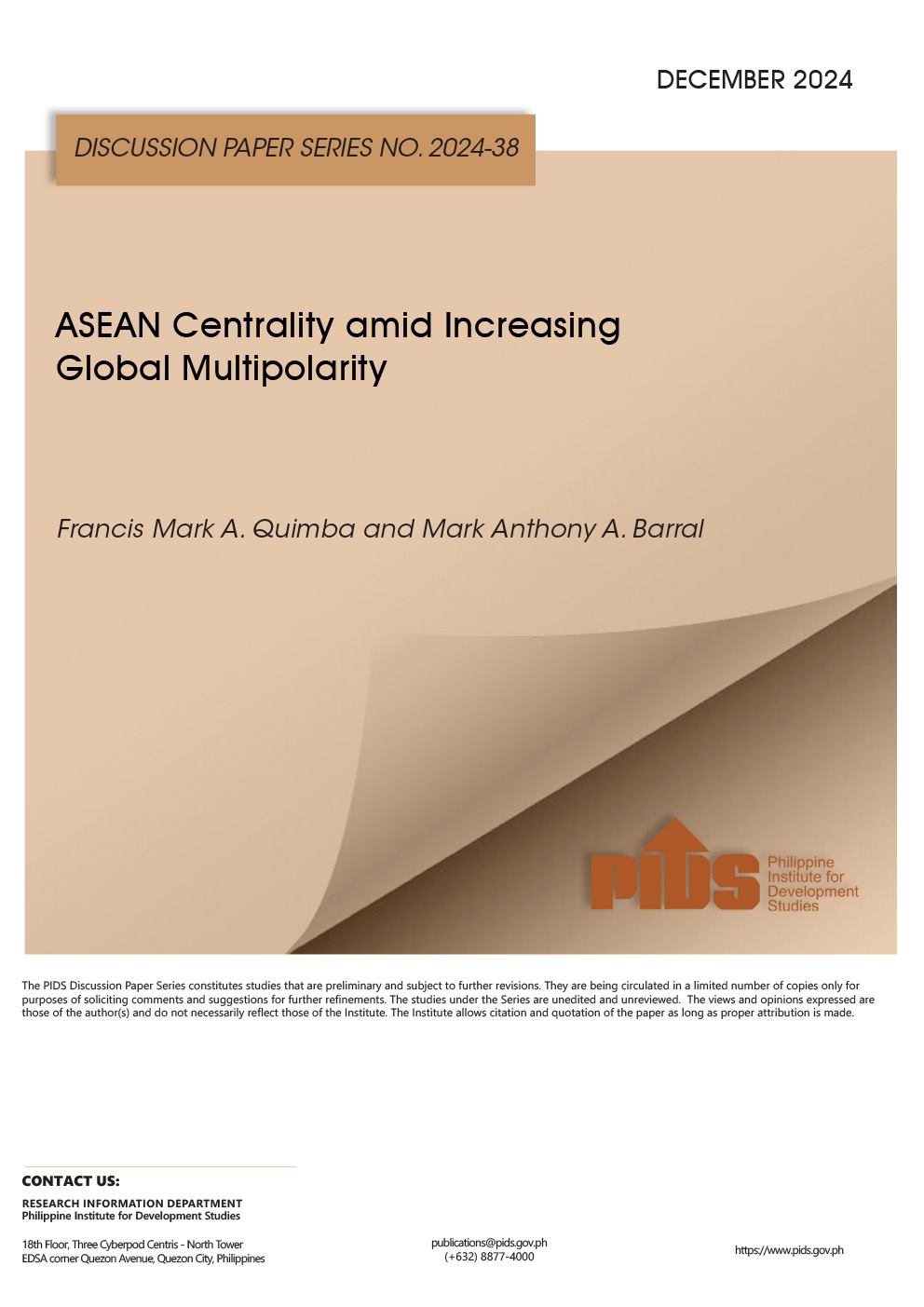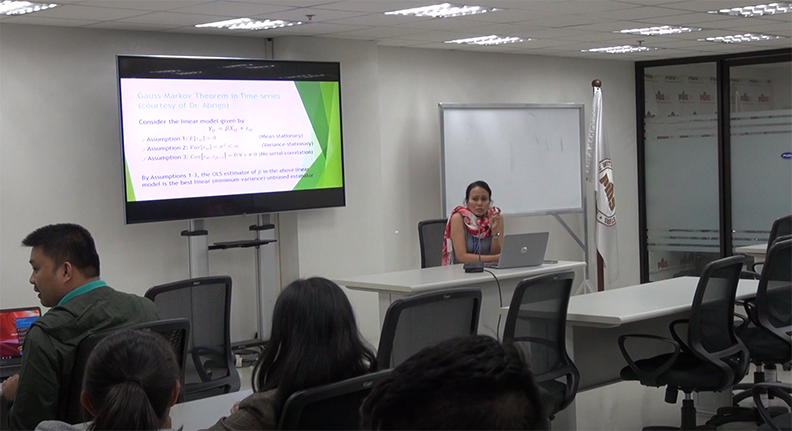The COVID-19 pandemic and the resulting Enhanced Community Quarantine (ECQ) imposed upon our country have put our lives at a standstill in more ways than one. The “new normal”, characterized by working from home and social distancing, among other things, plus the tremendous slowdown in business operations, and the economy taking a huge hit towards a probable recession‒these are some of the consequences of the unprecedented crisis that we are in.
Before ECQ, the Gross Domestic Product (GDP) of the country has been robust; 2019 started its first quarter with a 5.7% growth in GDP, which rose to 6.7%by the final quarter. According to a recent report from the Philippine Statistics Authority, the Philippine economy has contracted in the first three months of 2020. GDP declined by 0.2%, putting an end to a two-decade uninterrupted growth. However, economists believe that this could just be the tip of the iceberg that could reveal a much steeper decline in the coming quarters.
In a discussion paper entitled Projected Disease Transmission, Health System Requirements, and Macroeconomic Impacts of the Coronavirus Disease 2019 (COVID-19) in the Philippines published by the Philippine Institute for Development Studies, industry sectors on manufacturing, wholesale and retail trade are expected to suffer the most losses under various scenarios as a result of weaker global and domestic demand. The financial intermediation sector is likewise expected to suffer losses on the quantum of PH₱18.5bn to PH₱141.3bn, equivalent to around 1.1% to 8.6% of the sector’s share of gross value added to the economy. Common issues arising across industries include disruption of normal operations, lay-offs, and a drop in the bottom line. A central factor in all of these is the heightened liquidity risk being faced by companies.
As key building blocks in keeping the stability of our country, the financial services sector, particularly banks, are not spared from these shocks and vulnerabilities. Being in a unique position of having influence over how consumers and other businesses fare in these trying times, it is also imperative that liquidity concerns of banks be addressed.
In a crisis, it is anticipated that clients would prefer to keep a liquid position and de-risk their portfolios by holding more cash; for banks, this would mean higher demands for cash withdrawals. This, along with the volatilities in the market, as well as anticipated loan defaults, have put pressure on banks’ liquidity buffers. Several possible issues may arise from this such as not being able to meet the public’s demands for deposit withdrawals and borrowings, compliance with regulatory requirements, timely tax payments, as well as producing reliable information such as cash flow projections for stakeholders. More importantly, this could entail making difficult balance sheet decisions on how to better use liquidity to service renewals of loan facilities or drawdowns from committed credit lines.
In order to curb the liquidity risks being faced by banks and its possible effects on our economy, the Bangko Sentral ng Pilipinas (BSP) has intervened and introduced regulatory relief measures to alleviate this pressure on liquidity. The BSP has lowered the reserve requirement ratios (RRR) for deposits and deposit substitutes by 200 basis points effective 3 April 2020 and has reduced the minimum liquidity ratio requirement for standalone thrift, rural, and cooperative banks effective until the end of year. The BSP has also provided regulatory flexibilities to banks for their efficient use of capital and liquidity buffers. Banks are now allowed to draw down on its 2.5% minimum capital conservation buffer and from its stock of highly liquid assets, without breaching regulatory requirements, subject to certain conditions.
These measures would free up liquid assets, which can be used by banks in attending to their current liquidity requirements and at the same time in aiding the economy in getting back to its feet. Know-your-client requirements have also been relaxed with the aim of ensuring continuity in the provision of public access to basic financial services.
Aside from taking full advantage of the concessions provided by BSP, further measures that can be taken by banks to mitigate the heightened liquidity risk include revisiting their asset-liability management strategy by focusing on meeting their short-term operational needs, while still giving consideration to their post-ECQ long-term commitments and branding. Likewise, the behavior of the deposit portfolio should be monitored as clients are expected to increase their cash positions. Given the current volatile market, banks must also be on the lookout for affordable rates to convert costly borrowings to cheaper sources of funding. Cost-cutting for non-essential activities should also be taken into consideration.
The BSP has used most of the expansionary monetary policy weapons in its arsenal to ensure that the financial system has adequate liquidity. Banks, through the Bankers Association of the Philippines, have expressed their commitment to the national government to aid in the recovery and rehabilitation of our nation. This, combined with appropriate fiscal policies from the government, and us doing our share in ‘flattening the curve’, will be key as we strive to get out of this slump. While we have seen several downgrades on the economic outlook, both on the domestic and global fronts, it is critical that citizens, as integral components of this ecosystem, together with the institutions in our nation, maintain a positive outlook and believe that amid all the uncertainties, we can bounce back, stronger than ever.
Before ECQ, the Gross Domestic Product (GDP) of the country has been robust; 2019 started its first quarter with a 5.7% growth in GDP, which rose to 6.7%by the final quarter. According to a recent report from the Philippine Statistics Authority, the Philippine economy has contracted in the first three months of 2020. GDP declined by 0.2%, putting an end to a two-decade uninterrupted growth. However, economists believe that this could just be the tip of the iceberg that could reveal a much steeper decline in the coming quarters.
In a discussion paper entitled Projected Disease Transmission, Health System Requirements, and Macroeconomic Impacts of the Coronavirus Disease 2019 (COVID-19) in the Philippines published by the Philippine Institute for Development Studies, industry sectors on manufacturing, wholesale and retail trade are expected to suffer the most losses under various scenarios as a result of weaker global and domestic demand. The financial intermediation sector is likewise expected to suffer losses on the quantum of PH₱18.5bn to PH₱141.3bn, equivalent to around 1.1% to 8.6% of the sector’s share of gross value added to the economy. Common issues arising across industries include disruption of normal operations, lay-offs, and a drop in the bottom line. A central factor in all of these is the heightened liquidity risk being faced by companies.
As key building blocks in keeping the stability of our country, the financial services sector, particularly banks, are not spared from these shocks and vulnerabilities. Being in a unique position of having influence over how consumers and other businesses fare in these trying times, it is also imperative that liquidity concerns of banks be addressed.
In a crisis, it is anticipated that clients would prefer to keep a liquid position and de-risk their portfolios by holding more cash; for banks, this would mean higher demands for cash withdrawals. This, along with the volatilities in the market, as well as anticipated loan defaults, have put pressure on banks’ liquidity buffers. Several possible issues may arise from this such as not being able to meet the public’s demands for deposit withdrawals and borrowings, compliance with regulatory requirements, timely tax payments, as well as producing reliable information such as cash flow projections for stakeholders. More importantly, this could entail making difficult balance sheet decisions on how to better use liquidity to service renewals of loan facilities or drawdowns from committed credit lines.
In order to curb the liquidity risks being faced by banks and its possible effects on our economy, the Bangko Sentral ng Pilipinas (BSP) has intervened and introduced regulatory relief measures to alleviate this pressure on liquidity. The BSP has lowered the reserve requirement ratios (RRR) for deposits and deposit substitutes by 200 basis points effective 3 April 2020 and has reduced the minimum liquidity ratio requirement for standalone thrift, rural, and cooperative banks effective until the end of year. The BSP has also provided regulatory flexibilities to banks for their efficient use of capital and liquidity buffers. Banks are now allowed to draw down on its 2.5% minimum capital conservation buffer and from its stock of highly liquid assets, without breaching regulatory requirements, subject to certain conditions.
These measures would free up liquid assets, which can be used by banks in attending to their current liquidity requirements and at the same time in aiding the economy in getting back to its feet. Know-your-client requirements have also been relaxed with the aim of ensuring continuity in the provision of public access to basic financial services.
Aside from taking full advantage of the concessions provided by BSP, further measures that can be taken by banks to mitigate the heightened liquidity risk include revisiting their asset-liability management strategy by focusing on meeting their short-term operational needs, while still giving consideration to their post-ECQ long-term commitments and branding. Likewise, the behavior of the deposit portfolio should be monitored as clients are expected to increase their cash positions. Given the current volatile market, banks must also be on the lookout for affordable rates to convert costly borrowings to cheaper sources of funding. Cost-cutting for non-essential activities should also be taken into consideration.
The BSP has used most of the expansionary monetary policy weapons in its arsenal to ensure that the financial system has adequate liquidity. Banks, through the Bankers Association of the Philippines, have expressed their commitment to the national government to aid in the recovery and rehabilitation of our nation. This, combined with appropriate fiscal policies from the government, and us doing our share in ‘flattening the curve’, will be key as we strive to get out of this slump. While we have seen several downgrades on the economic outlook, both on the domestic and global fronts, it is critical that citizens, as integral components of this ecosystem, together with the institutions in our nation, maintain a positive outlook and believe that amid all the uncertainties, we can bounce back, stronger than ever.








